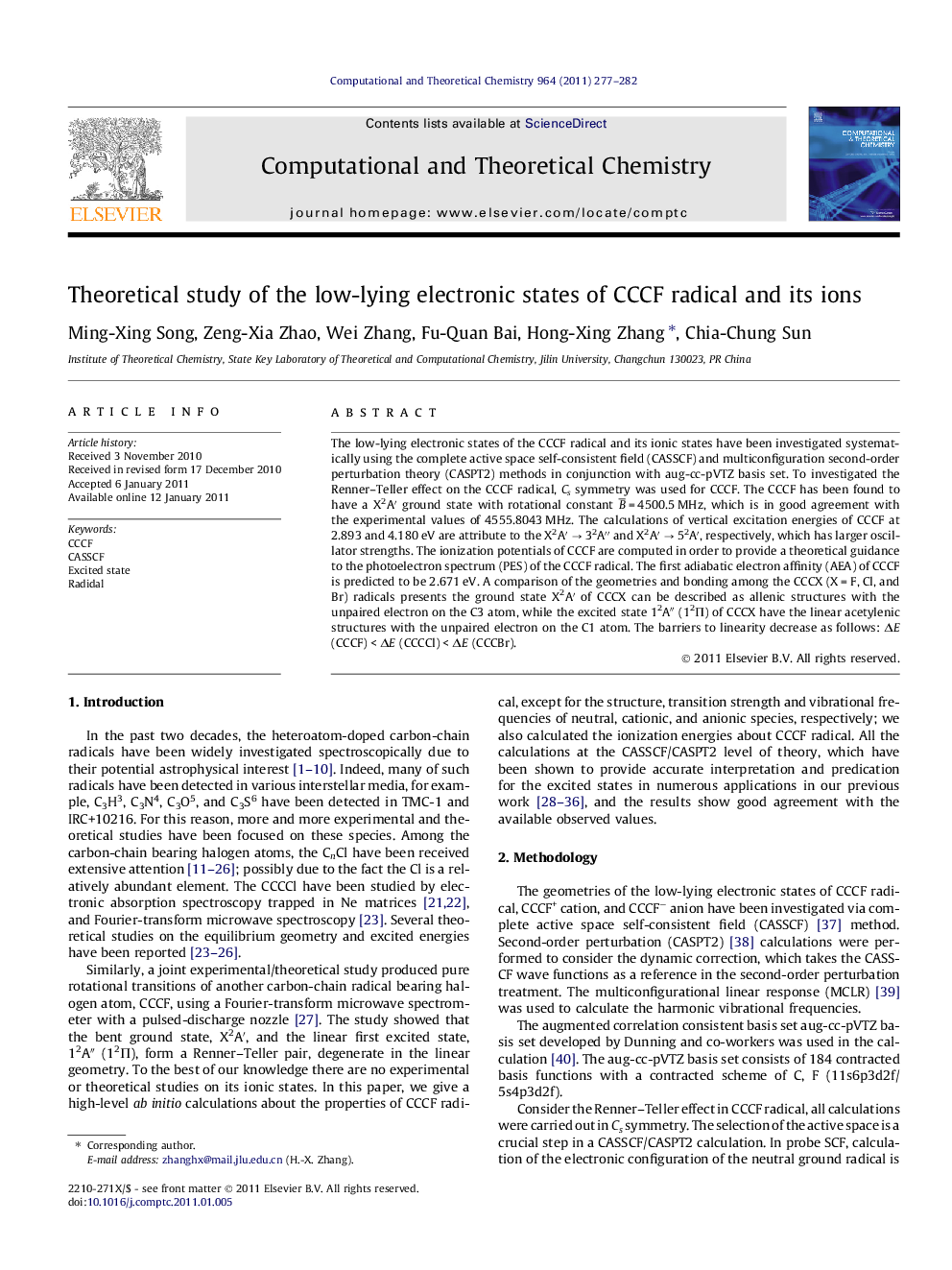| Article ID | Journal | Published Year | Pages | File Type |
|---|---|---|---|---|
| 5395334 | Computational and Theoretical Chemistry | 2011 | 6 Pages |
Abstract
The low-lying electronic states of the CCCF radical and its ionic states have been investigated systematically using the complete active space self-consistent field (CASSCF) and multiconfiguration second-order perturbation theory (CASPT2) methods in conjunction with aug-cc-pVTZ basis set. To investigated the Renner-Teller effect on the CCCF radical, Cs symmetry was used for CCCF. The CCCF has been found to have a X2Aâ² ground state with rotational constant B¯ = 4500.5 MHz, which is in good agreement with the experimental values of 4555.8043 MHz. The calculations of vertical excitation energies of CCCF at 2.893 and 4.180 eV are attribute to the X2Aâ²Â â 32Aâ³ and X2Aâ²Â â 52Aâ², respectively, which has larger oscillator strengths. The ionization potentials of CCCF are computed in order to provide a theoretical guidance to the photoelectron spectrum (PES) of the CCCF radical. The first adiabatic electron affinity (AEA) of CCCF is predicted to be 2.671 eV. A comparison of the geometries and bonding among the CCCX (X = F, Cl, and Br) radicals presents the ground state X2Aâ² of CCCX can be described as allenic structures with the unpaired electron on the C3 atom, while the excited state 12Aâ³ (12Î ) of CCCX have the linear acetylenic structures with the unpaired electron on the C1 atom. The barriers to linearity decrease as follows: ÎE (CCCF) < ÎE (CCCCl) < ÎE (CCCBr).
Keywords
Related Topics
Physical Sciences and Engineering
Chemistry
Physical and Theoretical Chemistry
Authors
Ming-Xing Song, Zeng-Xia Zhao, Wei Zhang, Fu-Quan Bai, Hong-Xing Zhang, Chia-Chung Sun,
